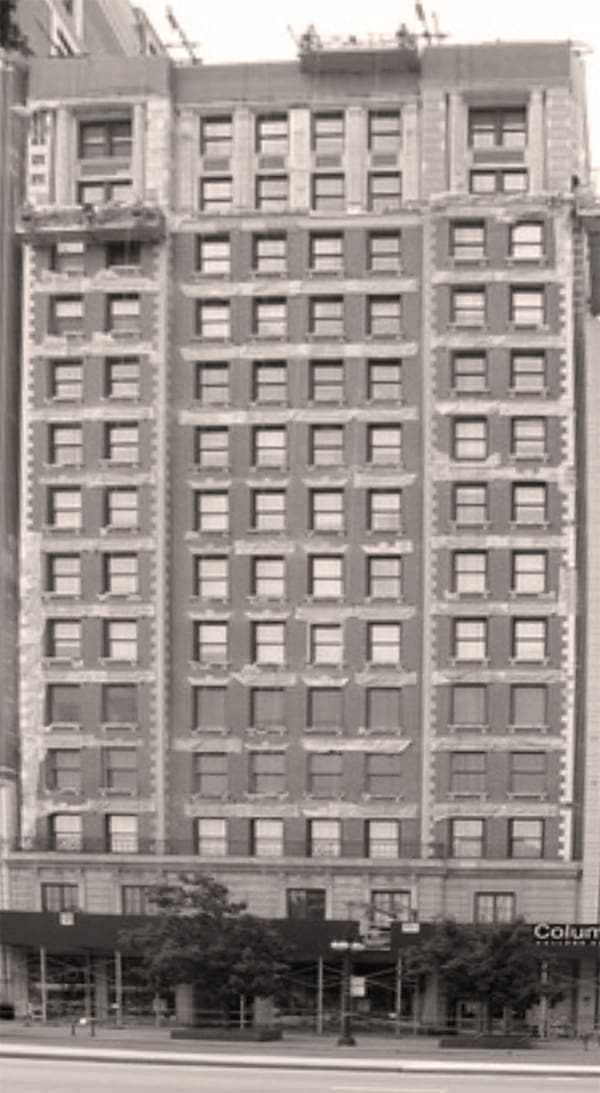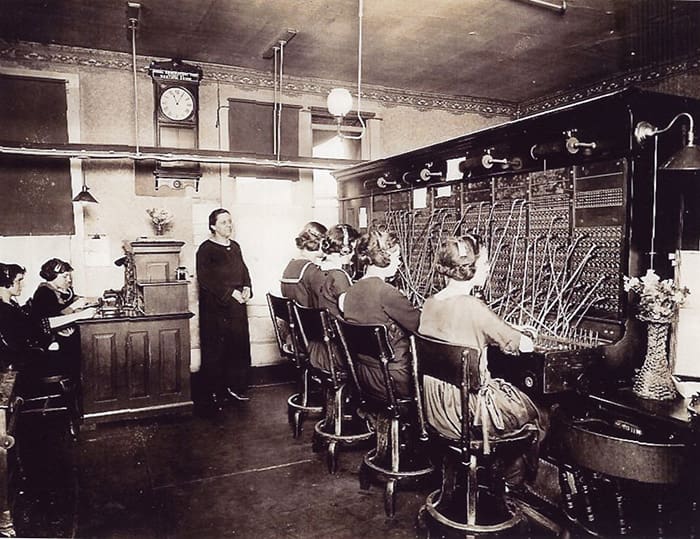The Two Bostonians Promote Centre College While the College Waits to Hear from Harvard
Howard Reynolds’ and Eddie Mahan’s stories in the Boston Post after their return from Danville to Boston had certainly been encouraging to Centre about the possibility of being included on the 1920 schedule of the Harvard Crimson.
Reynolds-
I’m convinced that Centre College would have made it very uncomfortable for the Crimson gridiron warriors in their final game of the year, and beaten it in some of their earlier contests.
Reynolds recapped the 1919 season of the Colonels and then asked-
How did a little school like Centre accomplish it? How was it possible for this preciously obscure eleven to accomplish this remarkable feat? After all, the entire student body does not equal the numbers that Harvard, Yale and Princeton are able to draw out for the opening drill of the season.
The answer seems to be a combination of various ingredients that mixed together make a winning formula.
Down in Danville, folks will first tell you it is the material, then the coach, and finally the spirit. But I believe that you have to dig deeper than that.
First- There is the faith in themselves, not born of overconfidence.
Second- Coach Charles Moran.
Third- The material.
Fourth- The firm belief of the material, and almost filial affection for that coach.
Fifth- The complete absorption of the fact that no matter when or where they play, there have to be eleven men in it. That a play can’t go wrong if every man is where he belongs and does his duty.
Sixth- Every man knows that no matter how good he is, he is bound by honor to strict training.
Seventh- The possession of three great players in McMillin, Roberts and Weaver.
Eighth- The hammering home of the idea that the only play is clean play.
There is a play in every game which Centre takes part in that precedes the kickoff. In a large amount, it may account for the faith and spirit. It is a prayer offered by either the president of the college, or Captain McMillin.
Not a prayer asking for great accomplishments, but a quiet, earnest prayer for guidance and direction that the sons of Old Centre may live up to the glorious and worthy traditions of the past.
It is a prayer that sends every man out of the locker room and onto the field weeping, determined to play a man’s part in a man’s game, from first to last. A prayer that fills him with the faith that all that he has to do is perform his part, and all will be well for Old Centre.
Every one of them seems to be iron men and go through grueling games at top speed. In two important contests, only two substitutions were made, and only one in the West Virginia contest.
They are as fine a lot of clean-cut athletes as one ever sees on a college gridiron. One look at them and any idea that there are “ringers” among them is squelched in your mind.
Howard Reynolds then pointed out the contrast of the program in Danville with that of Harvard. He recounted the episode when he and Eddie Mahan first encountered Uncle Charlie in the basement dressing room below the gym on the night when the two of them first walked around the campus and Moran was working on the players’ shoes, replacing cleats.
He also told how another night, team captain, Bo, and Terry Snowday, a starting end, had been in the dressing room at 10:00 PM with their coach helping drying out uniforms used from the previous afternoons’ muddy workout so they could be packed for the next days’ game with Georgetown.
Can you imagine, at Harvard, Coach Fisher, assisted by Eddie Casey ( an All-American on the 1919 Crimson squad ) packing up the gridiron wearing apparel on the night before the Yale game?
All of the Colonels hope to invade the East, and it would be a shame if the football fans in our area don’t a chance to see this remarkable group of men in action.
Howard Reynolds had done all that he could to promote Centre it his quest to have Harvard play an intersectional schedule.
Eddie Mahan did the same. His story, in the same issue of the Post, was carried under a two-column headline-
Centre Play is Impressive
Undefeated Kentucky College
Best Record of Season Says Mahan
His story ended by stating-
If you go by the records of college football, Centre College of Kentucky’s undefeated eleven has more of a right to claim the championship of 1919 than any other program.
Centre didn’t even want to consider planning the 1920 schedule before it knew what was going to happen with Harvard. On Monday, December 1, Uncle Charlie, Chief Myers, Dr. Ganfield, and the faculty representative, Dr. Frank Rainey, began the work of mapping out the upcoming season.
While they knew they needed to get some commitments, they didn’t themselves want to make any commitments until they knew for certain what Harvard’s plans were. The meteoric rise of the Colonels in the hierarchy of college football had caught the attention of colleges all over the country. Suddenly, everyone wanted to play the little school which two years previously had difficulty in getting anyone to take notice.
The University of Illinois, Pittsburgh, Washington and Lee, a significant program at the time, and Boston College, all proposed games. Lehigh of Bethlehem, Pennsylvania, said it could guarantee an attendance of 14,000 for a game and a nice payday if Centre would sign a contract.
While the offers continued to pour in and were gratifying, Centre waited for one, hopefully, from Cambridge.
All week- nothing.
By the weekend, the Chief had to go to Chicago to attend to some business.
As the Athletic Director, he would be the one to contact regarding scheduling and sent a telegram to Harvard’s people advising them where he would be the next few days.
Monday, December 8. Again-nothing.
Tuesday, December 9- Silence.
On Wednesday, December 10, a telegram was delivered by a young courier to the office of Myers and Trimble, Suite 911, at 624 South Michigan Boulevard.

Office of Chief Myers on 9th floor at 624 South Michigan Blvd.
Chief Myers nervously opened it and then let out an uncharacteristic, “Whoop!”
“We’re going to play Harvard! We’re going to play Harvard! Can you believe it?”
“I guess that’s swell.”
“Harvard! We’re going to play Harvard!”
The Chief began the arduous process of calling long distance to Danville. First, he had to connect to a local operator who would take down the information and then pass it to a long distance operator who would get the various circuits connected necessary to complete the call. Meanwhile, he sat impatiently, waiting for the AT&T operator to call back with his connection.

Waiting for the connection
Dr. Ganfield knew when he picked up the phone and heard that he had a call from Chicago that it had to be from the Chief. And, he knew that it had to be about Harvard.
“Chief?”
“We’ve been put on Harvard’s schedule! We’re going to play Harvard!”
Neither man could restrain himself, repeating over and over, “We’re going to play Harvard. Can you believe it- Harvard!”
Kentuckians throughout the state were as thrilled as Dr. Ganfield and Chief Myers.
The Louisville Times, afternoon partner of the Judge Robert Worth Bingham’s Courier-Journal, published a story after the Harvard game was announced which predicted what it would be like when Centre arrived at Harvard Stadium.
When the Centre College football eleven trots onto the gridiron at Cambridge, Mass. at 1:45 o’clock on the afternoon of October 23, 1920, there will be a delegation from Kentucky, a mass waving the Gold and White banner, sitting down near the front. This band of rooters will immediately go into convulsions as the Colonels take the field and start running through their signals.
The bowl will be filled because the strength and power of the Centre eleven have been cast upon the waters and are returning. Eastern newspapers have published a world of information about Uncle Charlie Moran and his boys, and the Easterners are curious to know just what sort of team can stir up such a noise way down in Kentucky.
Nobody in the East had ever heard about Centre until well in the season of 1919. The first news that tricked up there was the score of a game showing that some little insignificant eleven called Centre had beaned Indiana. Must be some fluke. Later, a score bobbled up that Centre had hopped over to Virginia and trimmed Virginia by a large score. Then everything was quiet. People saw that West Virginia had taken on Centre for a practice game. Well, West Virginia would show the Centre crowd some tricks. They’d knock some of the cocky air out of the Southerners. But alas and alack-and a couple of more of them, Centre lambasted West Virginia. Then it was that the East said it would have to find out where Centre College was and publish some dope on it. The news contained a lot of interesting stuff.
Harvard invited Centre to play in 1920, and Centre accepted. And that’s how little insignificant Centre accomplished in one year what it has taken other teams many years to do. And that’s how it happened that Centre trotted on this field on this day in October. As we said, the delegation from Kentucky went wild when the “Praying, Fighting Colonels” lined up for the first scrimmage.
In three years, the Chief, Uncle Charlie, and Dr. Ganfield had scaled the mountain. They were near the pinnacle. The Chief’s longtime ambition had been fulfilled. His beloved Centre College was poised to become known anywhere there was a fan who cared about college football, and to gain recognition and fame beyond what anyone other than he could have imagined even in their most outlandish dreams.
“Centre and Harvard! Who would have believed it?”
Credendo Vides.
“To believe,” the Chief would say, “To believe, is to see!”
